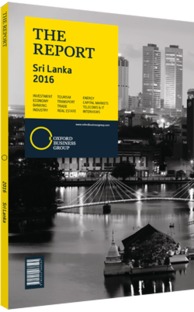Overseas remittances and tourism keep capital circulating in Sri Lanka
Worker remittances have been growing over time and now play an important role in the country’s international capital flows. They surpassed $7bn in 2014, up from about $2bn in 2006. Despite levelling off in early 2015, they then reached $8.2bn in 2015, which remains a large portfolio for a $75bn economy.
Historically, workers’ remittances have been essential for the stability of the economy. They have brought in preciously needed foreign reserves during a time of war, and have also been seen as a hedge against exogenous shocks. According to IMF research, the country’s economy is too dependent on a narrow range of exports, especially tea and garments, and is periodically in danger of a drop in inward capital flows from these exports. Worker remittances are seen as taking the edge off of this volatility, and protecting the country from a loss of overseas sales or a fall in prices.
While worker remittances have been less of a source of hard currency than industrial exports, on a net basis they are the leading source of foreign exchange, due to the fact that manufacturing requires the importing of material, components, equipment and technology. They also provide an element of support for the elderly, help decrease poverty, and improve housing and education. As such, Sri Lankan banks have become increasingly involved with remittances, channelling them through formal outlets to help support development activities.
Concerns
Some concerns about workers’ remittances do exist, especially when it comes to social well-being and development. Worker remittances are also not as stable as hoped. They are highly sensitive to international economic conditions and particularly geared to the price of oil, as many overseas Sri Lankan workers are employed in the Middle East. As the price of oil has declined precipitously in recent years, hiring has slowed and these inflows are now at risk.
An estimated 55% of total remittances come from the Gulf states, according to the central bank. So as the Sri Lankan economy benefits from falling oil prices in terms of lower import costs, it may lose some remittance inflows as a result of weaknesses in oil producing countries, including those from tea exports as well as those from worker remittances.
Other negative factors affecting worker remittances globally include the declining Russian ruble, the weak European economy and tighter immigration controls in many countries. The US economy is seen as picking up, but not enough to counter these other factors. Counterbalancing forces include the falling cost of sending money back to home countries. On a $200 transfer, the 2016 cost is about 8% of the total, down from about 10% in 2008. Another uptick is also possible as the rupee has fallen against the dollar.
Tourism
In 2014, worker remittances and tourism receipts were almost equal to merchandise exports. They have contributed to balance of payments surpluses in recent years despite the heavy trade deficits. Tourism earnings represent a smaller portion of the total, but they have been rising quickly with the restoration of peace. In 2014, they were up 42% on the year, while in 2013 earnings grew 65%. In 2015, a record 1.8m tourists brought $2.9bn to Sri Lanka, up considerably from the $367m reported in 1995.
According to the World Travel & Tourism Council, the direct contribution from tourism was approximately 4.8% of GDP in 2015. The indirect contribution is 11.1% of GDP, and the sector employs an estimated 10% of the nation’s workforce. While Sri Lanka’s tourism market is 65th in the world by absolute size, it is ranked 21st in terms of long-term growth potential (from 2015-25). The island is currently witnessing a diversification of its visitor base, with faster growth being driven partly by more arrivals from East Asia.
Impressive inflows are also being generated by ICT services and business process outsourcing. ICT services alone were worth $1bn in 2015, and the country is one of the top 50 outsourcing destinations globally.
You have reached the limit of premium articles you can view for free.
Choose from the options below to purchase print or digital editions of our Reports. You can also purchase a website subscription giving you unlimited access to all of our Reports online for 12 months.
If you have already purchased this Report or have a website subscription, please login to continue.

